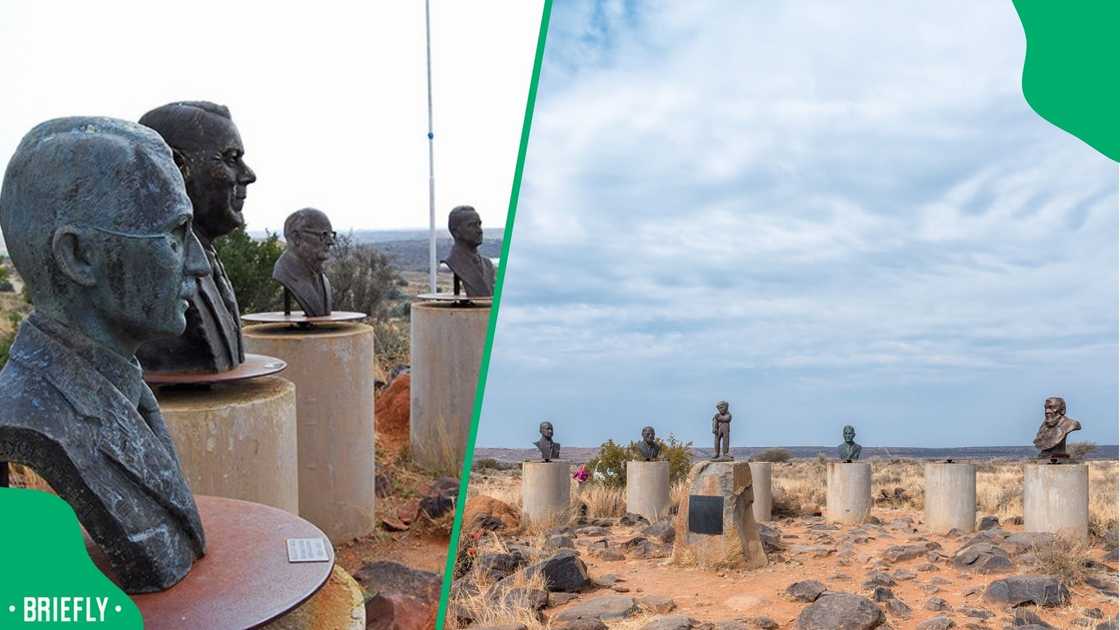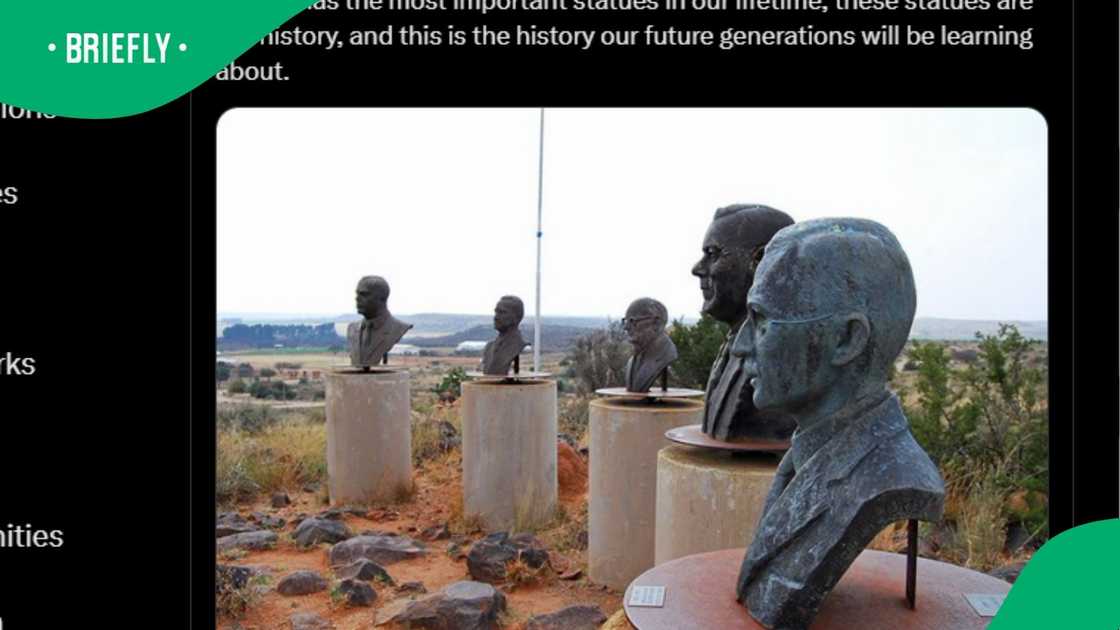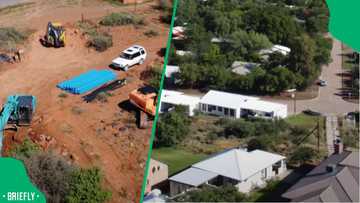"These Statues Are Our History": Mzansi Takes a Closer Look at Monuments in Orania
- A post showing statues of former South African leaders in Orania has sparked discussion about the preservation of historical monuments and their significance to different communities
- The image displays busts of pre-democracy presidents arranged in a semi-circle behind the town's symbolic "little giant" statue, a young boy rolling up his sleeves
- South Africans responded with varied perspectives on social media, with some emphasising the importance of historical preservation

Source: UGC
A social media post has given South Africans a closer look at the statues displayed in Orania, sparking conversation about historical monuments.
Content creator @Lebona_cabonena shared an image on X (formerly Twitter) showing the busts of former South African presidents from the pre-democracy era. The post was captioned:
"Orania has the most important statues in our lifetime, these statues are our history, and this is the history our future generations will be learning about."
The statues are positioned on Monument Hill, an arid elevation overlooking the town of Orania. This location is considered sacred by the town's approximately 3,000 Afrikaner residents. At the forefront stands a statue of a young boy rolling up his sleeves, which has become the symbol of Orania.
PAY ATTENTION: Briefly News is now on YouTube! Check out our interviews on Briefly TV Life now!
Behind the statue is a semi-circle of busts depicting former Afrikaner leaders, including figures like Hendrik Verwoerd, John Vorster, and D.F. Malan. These statues were relocated to Orania after being removed from other parts of South Africa.
View the X post below.
Understanding Orania's context
Orania was established as a self-governing community focused on preserving Afrikaner culture, language, and self-determination. The town was initially built by the former South African government in the late 1960s and early 1970s to house engineers and workers involved in the Orange River Project, an initiative to harness the Orange River for agriculture in the arid Karoo region.
The concept of Orania as a self-governing Afrikaner homeland has roots dating back to 1952, gaining momentum in the 1970s. The Orania Movement was formally founded in 1988, and the property was purchased in 1991.

Source: Twitter
South Africans share their views
The post generated various responses from South Africans:
@BrigadoMabrii compared:
"South Africa has the most important struggle songs in our lifetime, these songs are our history, and this is the history our future generations will be learning about."
@ScallywagPeet noted:
"That is on private property, it is as good as me telling you what paintings you can hang on the wall in your house."
@LLB_hard82389 admired:
"The statues are beautiful 😍"
@johancoetzee46 remarked:
"They don't bother anyone. These are displayed in an area where they chose to build and live."
3 other stories about Orania
- Briefly News reported on a young woman from Orania who shared insights into Afrikaner history, explaining why some celebrate February 27th and the significance of the Boer struggle against British forces 144 years ago.
- A South African tour guide from @big6safaris provided viewers with a rare inside look at the controversial Northern Cape town, revealing a community that has grown at an annual rate of 10%.
- Another virtual tour of Orania showcased its residential areas with large houses surrounded by trees, manufacturing facilities, construction sites, and recreational activities.
Source: Briefly News



